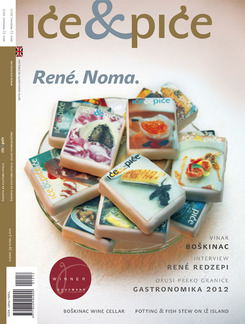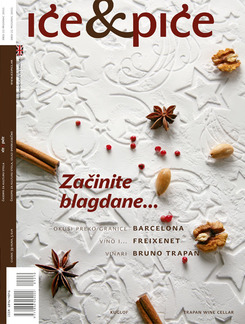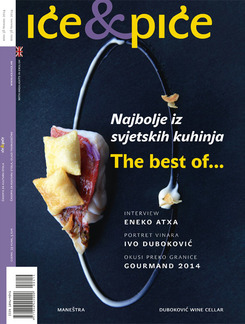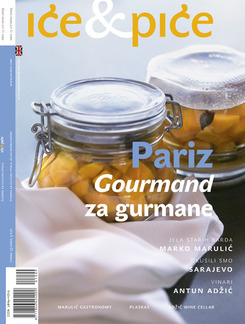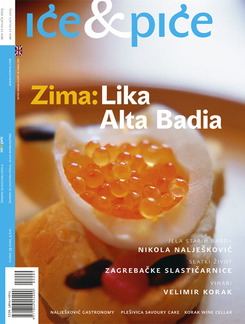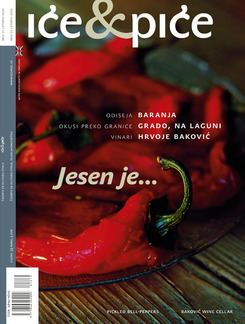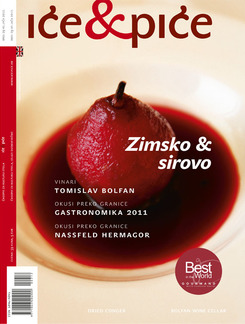Summer is coming in. Tomato, watermelon and peach. Thick and spicy tomato sauce, cucumber salad and frequent barbecues. The slower we are, and summer is no fan of speed, the faster we cook. In the swelter of summer, only the pot of stuffed peppers simmers long in the hot kitchen. Among all the summer culinary short-cuts, stuffed pepper remains a rare food that won’t be driven out by the long time of cooking, or dog days, or new fashion. We are unwaveringly attached to stuffed peppers, food that mother always makes the best.
Political and cultural histories don’t deal, alas, with stuffed peppers, and so it’s hard to untangle their tale. In a search for the history of this dish, we have no help from historians, though the history of the pepper – sweet variety of the capsicum – is well known. Brought from the New World as an exotic, ornamental plant, in two centuries it conquered the old continent. First as a cheap substitute for peppercorns, and then as the widespread plant from the family of accessories that fit particularly well into the cuisine of Asia. The sweet pepper story is particularly linked to Hungary and Spain, to whose gardeners we owe the cultivation of many pungent and sweet varieties. The beginning of the campaign that led to pepper subduing the continent is usually placed at the time of the Napoleonic Wars, when fortune turned for the spice pepper and Hungarian producers, which at that time were ravaging Europe. It is assumed that pepper arrived in Hungary in the 16th and 17th century with the Turkish invaders, when we find it called Turkish pepper. At first this spice was just a substitute for the so much longed for and unattainable pepper proper that soon paprika – a diminutive used in the Balkans – set off the imagination of the poor and the still poorer and by the end of the 18th century became a trademark of Hungarian cooking and indeed the country’s identity. In his Dietary Lexicon of 1944, Mayerhofer completely ignored the existence of sweet pepper and wrote that people used to hot things, like Hungarians and Spaniards, ate peppers fresh, or even stuffed them. But it is for certain that stuffed sweet peppers were then part of the standard summer repertoire. Writing of the vegetable in the wartime edition of her cult cookbook, Mrs Vučetić wrote that pepper was a favourite vegetable that the Hungarians particularly liked, while the Germans hardly know it at all. Among dishes from pepper, she mentions the stuffed variety. The first editions of Radica and Vučetić have, if different, stuffed pepper recipes. It is certain that as early as 1939, when Dalmatian Cuisine and Cooking were published, that they were a common and everyday part of the cuisine. The magazine Obitelj/Family had ten years earlier, in a regular column with weekly menus, proposed for lunch one Wednesday in the middle of August tomato soup, stuffed paprika and macaroni with cheese. The next year, 1931, stuffed peppers once again one Wednesday in August united the best of summer – tomato and paprika. But like the year before, among the recipes that followed, there wasn’t one for paprika. Obviously Stanka Andrić, who put her initials at the end of the column, thought that stuffed paprika was too much part of common practice to need a recipe. Equally popular at that time was stuffed kohlrabi and tomato. We can find them in cookery books from the 19th century, while at the same time sweet peppers were only spice plants. The origin of stuffed peppers came only with the horticultural solution for removing the heat from pepper. But even more interesting than the actual invention of stuffed peppers is the fact that before World War II they had already bridged the gap between inland and Mediterranean cooking – pepper is among the few dishes that are cooked in both the north and the south of Croatia.
Croatian writing is on the whole terse about food, but strangely enough stuffed peppers often appear on literary menus. In Krleža’s Flags that we might read as a catalogue of bourgeois Zagreb cooking, Kamilo Emerićki, to the disgust of his father, at a dinner started with Courvoisier and Martel, ordered peppers. He was amazed that his son had not ordered pheasant, or crab, or Balaton pike perch in aspic, but a common food, for which, indeed, old Emerički had always tormented his cook, for she made raspberry juice with vanilla flavour out of tomato sauce. But the taste of stuffed pepper is nevertheless related to home. The oldest written trace can be found in a postcard of December 27, 1918, sent from captivity in Italy. Her grandson Rudolf wrote to Agneza, in broad Kaikavian dialect: Don’t know when I’ll be back, but by stuffed peppers I certainly shall. Boris Szüts uses this short letter to start a chapter about stuffed pepper, a dish that in two words sums up the whole of the summer. The author’s grandmother Agneza spoiled the household with fine cooking and her stuffed peppers were a starting point from which everything else was graded. In the tastes of childhood, we seek consolation, but we can recognise too the beginnings of our own gourmet tastes. Pavić in his Ode to the Dishes of Workers and Farmers was to write precisely that it was one of the dishes that mother made the best, saying that many young wives found the cooking of their first dish of pepper a big challenge for which, as well as love, a dash of madness was needed. Growing up with stuffed pepper was for Pavić an example of growing up into a gourmet world. Few kids care about the pepper, and they eat just the meat balls soaked in the tomato sauce the peppers simmered in. When we are a bit older, we no longer shift the peppers to others’ plates, but polish them off whole, one after the other. Koko, the hero of Kušan’s novels for children, always revelled in pepper and in filling, regretting peppers were not as big as a continent. While Koko remains an eternal twelve-year-old, we others had to grow up sooner or later. Learn that pepper is loved constantly and will always be returned to even if grandmother and her kitchen are no longer in existence. I too regret grandmother’s peppers, filled with the closed upper cap. They winked under their little hats, with which we counted how many we had eaten. In a dialogue with them I test and cook all further peppers, forgetting that there are at least two Croatian cuisines. Summer in Zagorje doesn’t smell so different from an island summer, at least in the kitchen. In all of them, peppers are simmering away, no matter how hot it is. To pique poor summer appetites.


